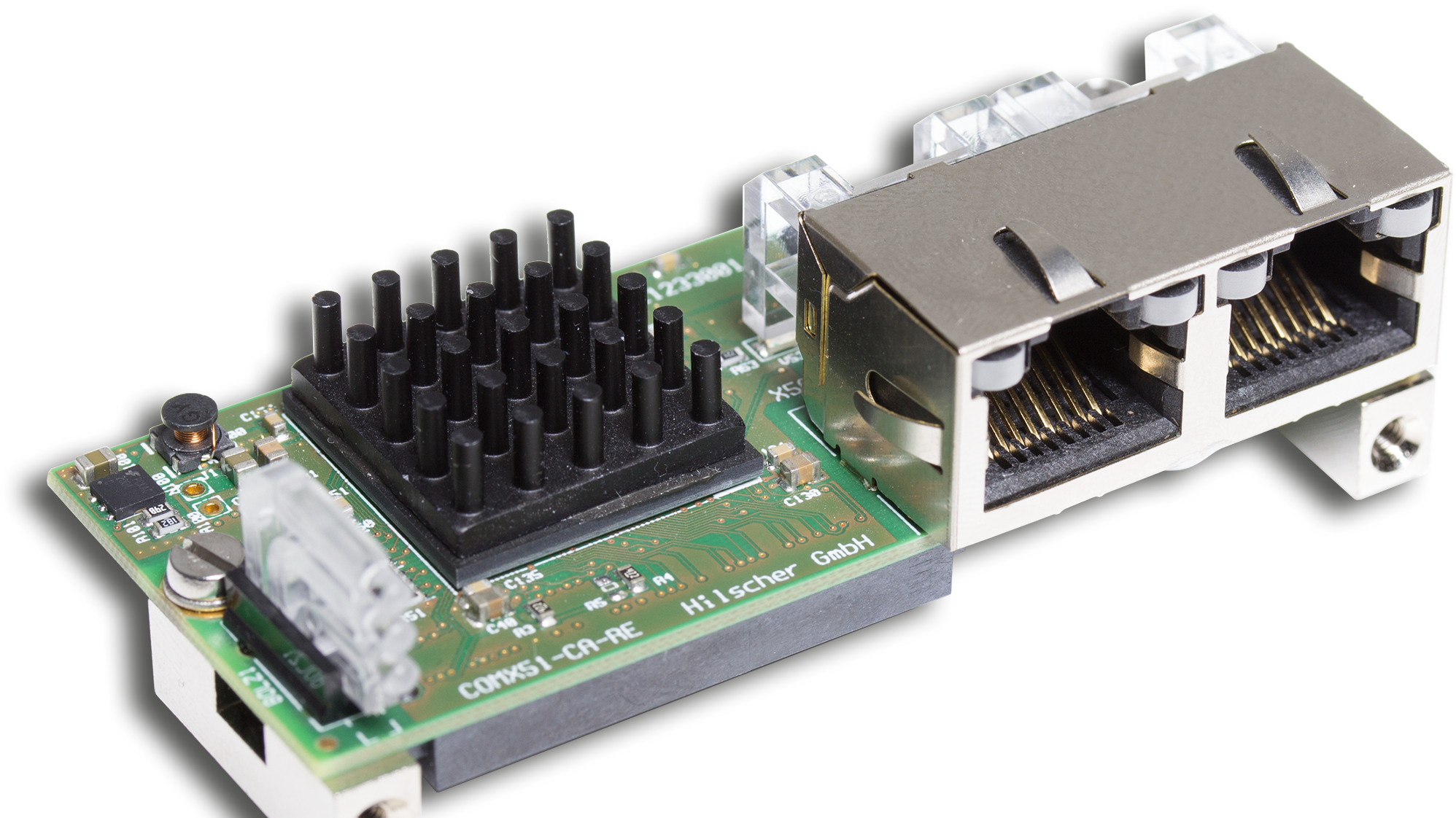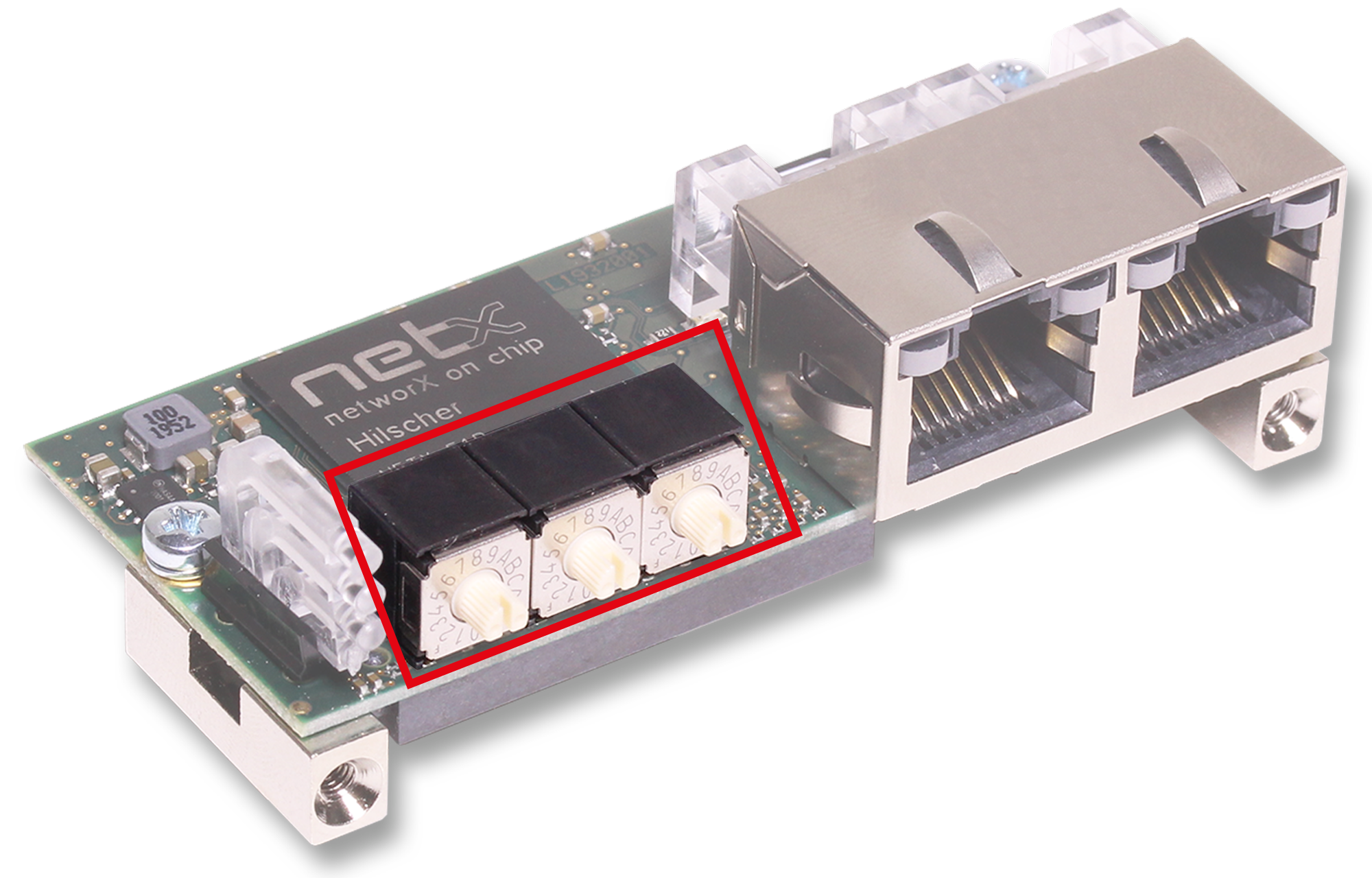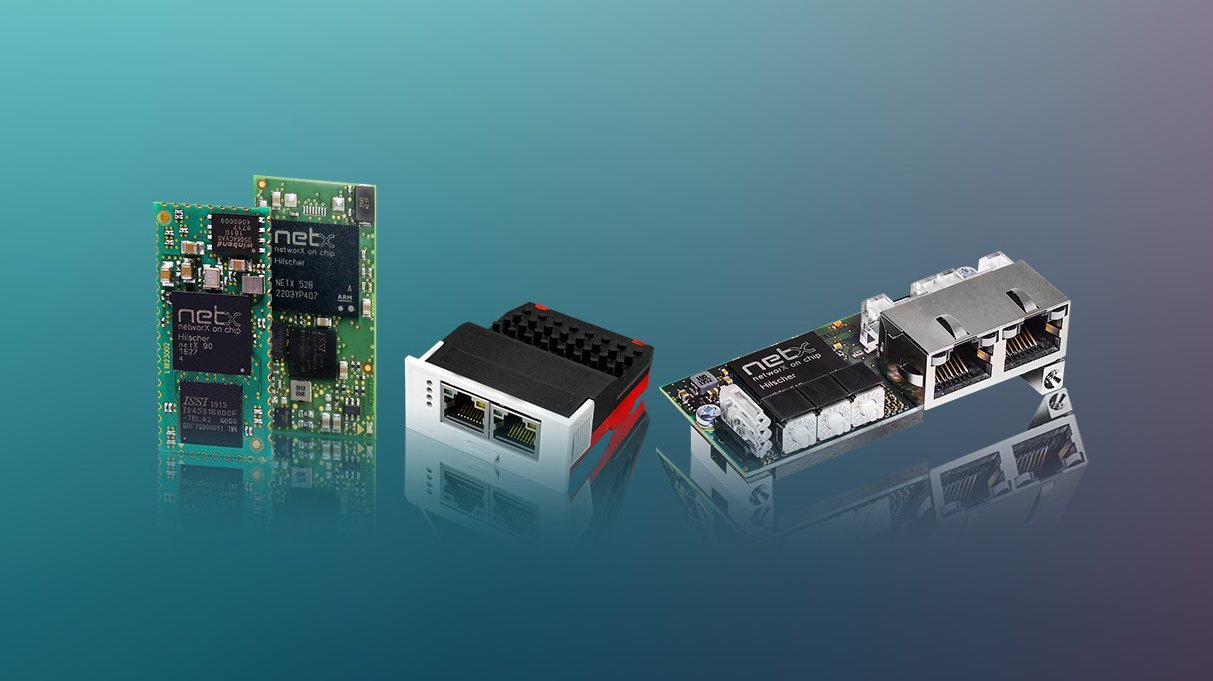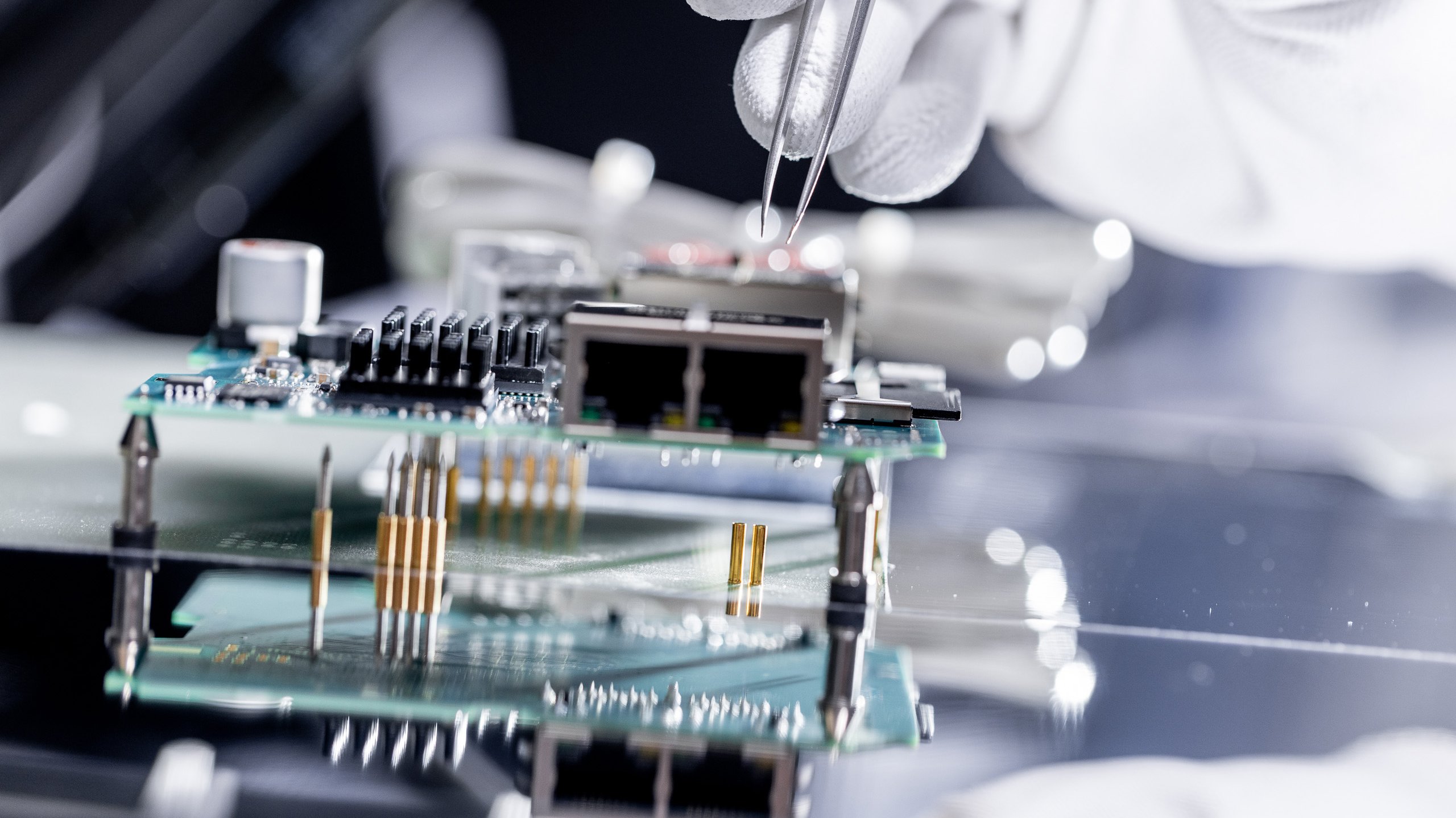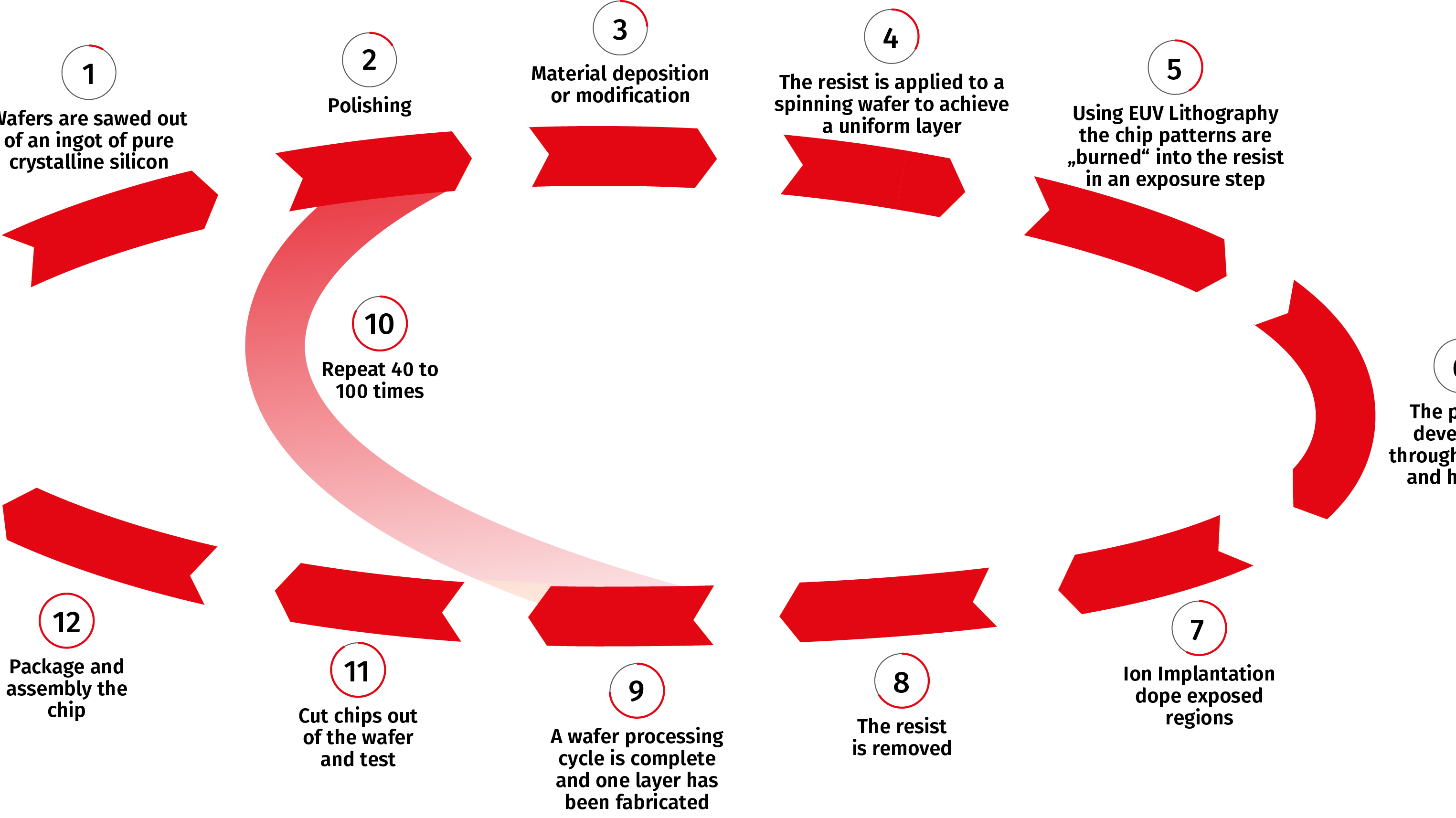The semiconductor industry relies on state-of-the-art technology when planning new production facilities. Thanks to the comX 51CA-RE\R machine builders are now finally able to fully concentrate on the development of their applications when designing their tools for the semiconductor industry.
On the visual side, the new comX for the semiconductor industry and the proven comX 51CA-RE module are only separated by some minor differences. It is important to highlight two features. Alongside saving a heatsink, the comX 51CA-RE\R also has three rotary switches. These rotary switches are used to set an Explicit Device Identification in the industrial protocol EtherCAT.

